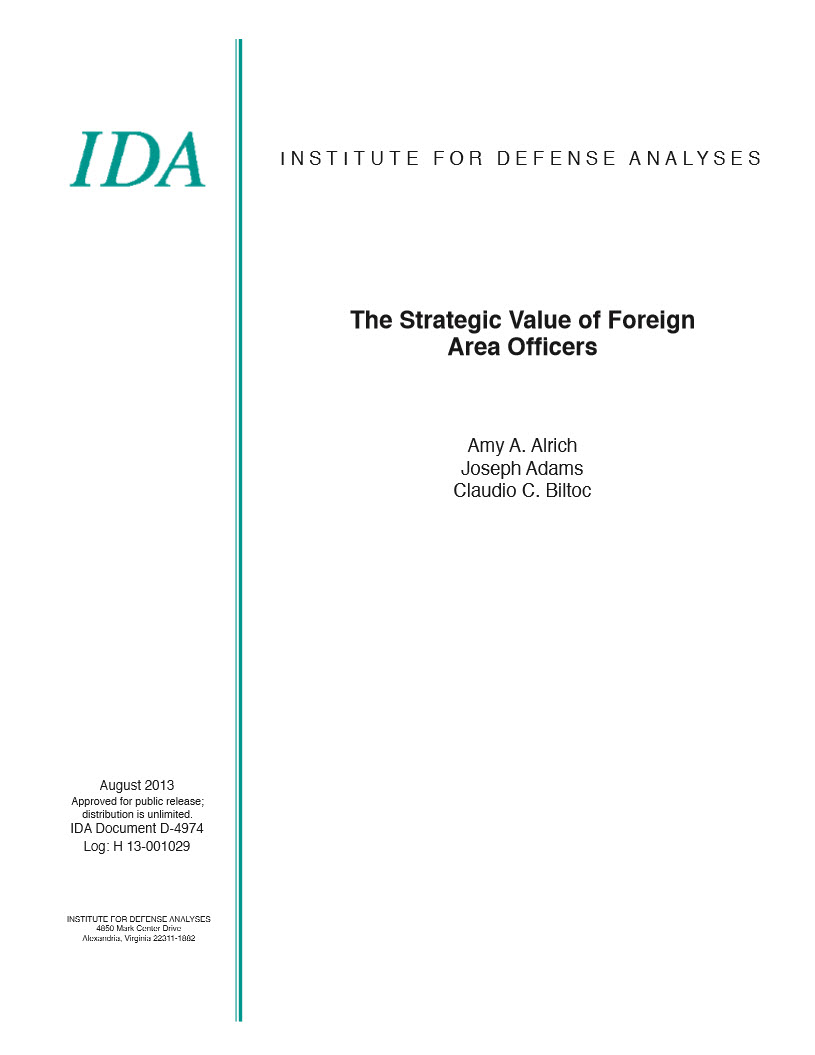The Strategic Value of Foreign Area Officers
August, 2013
IDA document: D-4974
FFRDC: Systems and Analyses Center
Type: Documents
Division: Intelligence Analyses Division,
Global Dynamics and Intelligence Division
Authors:
IDA document: D-4974
FFRDC: Systems and Analyses Center
Type: Documents
Division: Intelligence Analyses Division
Authors:
Authors
Amy A. Alrich, Joseph Adams, Claudio C. Biltoc
See more authors

